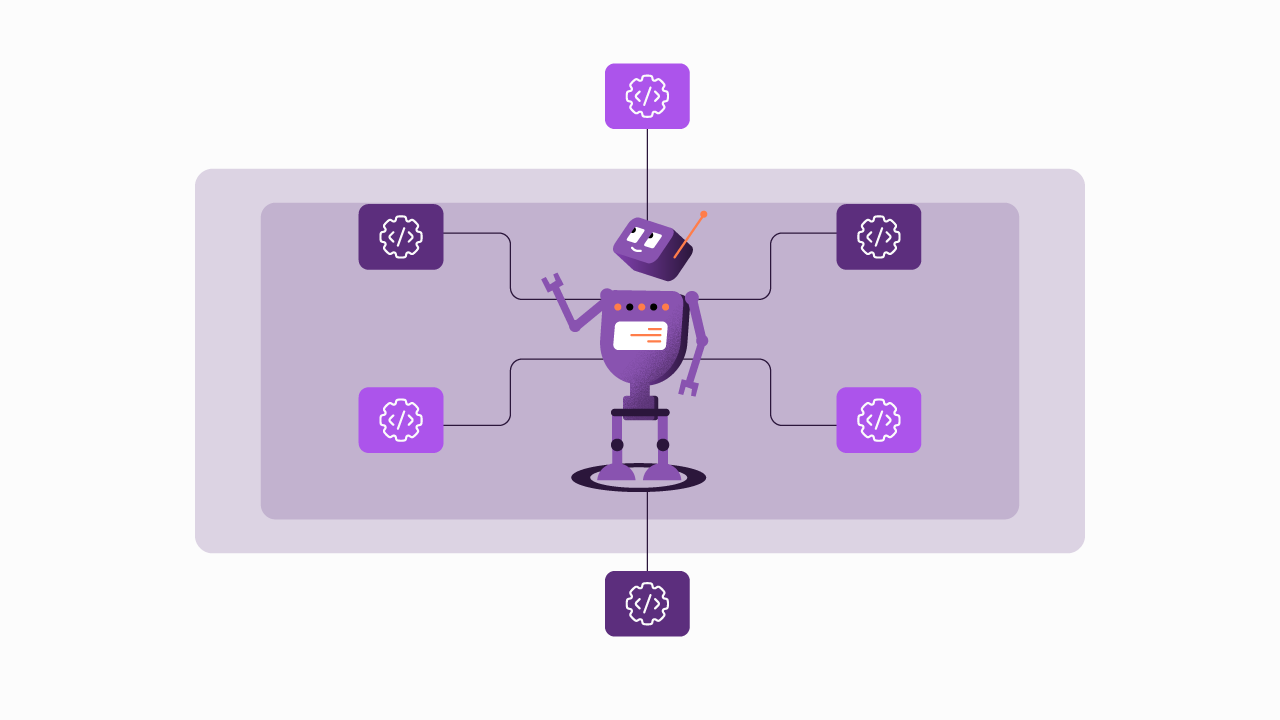The role of Fintech APIs in driving financial innovation
In the financial sector's quest for innovation, APIs have emerged as indispensable tools. They enable organizations to rebuild the trust of both investors and consumers by significantly enhancing the functionality and efficiency of financial products and services. For tech leaders at community banks and credit unions in the United States, understanding how to leverage fintech APIs can provide significant competitive advantages. Even if outsourcing is necessary to meet these demands, leadership must be well aware of the costs and benefits of implementing an API-first strategy.
What Are Fintech APIs?
Definition and Explanation
Fintech APIs are sets of rules and protocols that allow different software applications to communicate and share data. In the context of financial technology, these APIs enable third-party developers to access banking services and data.
How They Work
APIs work by providing a standardized way for different systems to interact. When a fintech app wants to access a bank's services, it uses an API to request the necessary data. The bank's system then responds through the API, allowing the app to use the data in its operations.
The Importance of Fintech APIs
Fintech APIs enable seamless integration and data exchange between different financial systems, allowing banks to offer more comprehensive and user-friendly services. This integration is crucial in today's market, where customers demand fast, secure, and accessible financial solutions.
Enhancing Digital Banking Experiences
APIs are the backbone of digital banking transformations, enabling banks to integrate various services such as payments, account management, and fraud detection into a single platform. By using fintech APIs, banks can offer personalized and efficient services, improving customer loyalty and engagement.
Facilitating Open and Embedded Finance
Open banking, facilitated by APIs, allows third-party developers to build applications and services around the financial institution's data and infrastructure. This has led to a surge in innovative financial products and services, such as personalized financial management tools and advanced lending platforms. Embedded finance, another trend powered by APIs, integrates financial services directly into non-financial platforms, creating a more seamless user experience.
API Security and Compliance
Security is a top priority when integrating APIs, especially in financial services. Banks must ensure that their APIs comply with industry standards and regulations to protect sensitive customer data. Implementing robust security measures and maintaining high uptime are critical factors for successful API integration.
Driving Efficiency and Innovation
Fintech APIs help banks automate various processes, from transaction processing to customer service, significantly enhancing operational efficiency. For instance, APIs can support automated trading, real-time data analytics, and even AI-driven customer service bots, which can handle customer inquiries around the clock.
Key Considerations for Choosing Fintech APIs
When working with Fintech APIs, it is essential to consider the following factors:
Reliability and Uptime: Choose providers with a strong track record of high uptime to ensure continuous service availability.
Security and Compliance: Ensure the API adheres to industry-standard security protocols and regulatory requirements.
Scalability and Performance: Work with APIs that can scale with your business needs without compromising performance.
Integration and Ease of Use: Select APIs that offer easy integration with your systems and comprehensive documentation through a developer portal.
Cost-effectiveness: Evaluate the pricing against the features provided to ensure it fits your budget and offers value for money.
Customer Support and Reputation: Consider the quality of customer support to ensure reliable and user-friendly service.
Common Types of Fintech APIs
Payment APIs
Payment APIs facilitate electronic transactions, allowing businesses to accept payments online and via mobile devices. These APIs are essential for e-commerce platforms, subscription services, and other digital payment solutions.
Data Aggregation APIs
Data aggregation APIs collect and consolidate financial data from multiple sources, providing a comprehensive view of a user's financial situation. This functionality is crucial for budgeting apps, personal finance manager tools, and other services that require a holistic view of personal finance.
Identity Verification APIs
Identity verification APIs help confirm the identity of users, ensuring that transactions are secure and compliant with regulatory standards. These APIs are vital for preventing fraud and maintaining the integrity of financial systems.
Lending APIs
Lending APIs streamline the loan application process, enabling faster and more efficient credit assessments. By automating the evaluation of creditworthiness, these APIs make it easier for consumers to access loans and for lenders to manage risk.
Account Information APIs
Account information APIs provide access to a user's bank account details, enabling services like balance checks, transaction history, and account verification. These APIs are crucial for personal finance management apps and financial planning tools.
Investment APIs
Investment APIs allow users to manage their investment portfolios, execute trades, and access real-time market data. These APIs are essential for robo-advisors, investment platforms, and stock trading apps.
KYC (Know Your Customer) APIs
KYC APIs streamline the process of verifying the identity of clients, ensuring compliance with anti-money laundering (AML) regulations and other legal requirements. These APIs are vital for onboarding new customers and maintaining regulatory compliance.
Banking as a Service (BaaS) APIs
BaaS APIs provide access to core banking functions, allowing non-bank companies to offer banking services such as account creation, deposits, and payments. These APIs enable fintech companies to create comprehensive financial solutions without needing a banking license.
Managing Fintech APIs Effectively
Effective API management must handle scalability and performance as demand spikes. Focusing solely on which fintech APIs to connect without a comprehensive API strategy will not lead to success. For instance, a payment API might function well on a small scale but could fail under heavy traffic if not properly managed. Similarly, a data aggregation API could become a bottleneck without scalability considerations. A holistic API strategy should include robust governance, efficient monitoring, and seamless integration with existing systems to ensure all APIs perform optimally.
Cloud-Native API Management: Utilize cloud-native solutions to manage APIs, which provide high-performance API gateways and security controls. This reduces tool sprawl and architectural complexity, making it easier to scale and manage APIs across diverse environments like Kubernetes and serverless platforms.
API-Centric Security: Implement robust security measures tailored to APIs, including protection against common vulnerabilities and advanced threats. This involves using automated security policies that adapt to evolving threats.
Integrated API Delivery Solutions: Improve operational efficiency by using integrated security and gateway solutions that align with DevOps practices. This includes automating API publishing, monitoring, and configuration to accelerate time-to-market and reduce costs.
Artificial Intelligence readiness: Leverage AI and machine learning technologies to enhance API security and performance monitoring. These tools can identify patterns and anomalies in API traffic, helping to preemptively address potential issues and optimize API operations.
Best Practices for API Security
Implementing best practices for API security is essential for protecting financial data. Key strategies include:
Encryption: Encrypt data both in transit and at rest to protect it from unauthorized access.
Access Controls: Use strong authentication and authorization mechanisms, such as OAuth 2.0 and OpenID Connect, to ensure that only authorized users and applications can access the API.
Rate Limiting: Implement rate limiting based on session IDs rather than IP addresses to protect APIs from abuse and denial-of-service attacks. This method ensures that legitimate users are not unfairly restricted due to shared IP spaces.
Logging and Monitoring: Maintain detailed logs of API activity and continuously monitor for suspicious behavior. This practice helps quickly detect and respond to security incidents.
Use of API Gateways: Deploy API gateways to manage and secure API traffic, enforce policies, and provide a single point of entry for API requests.
API Lifecycles
Effective API management involves overseeing the entire lifecycle of an API to ensure it remains functional, secure, and aligned with business goals. Key stages include:
Development: Design and develop the API with a focus on scalability, security, and ease of use. Utilize API design tools and follow best practices to create a robust API.
Sandbox Testing: Thoroughly test the API to identify and fix bugs, security vulnerabilities, and performance issues. Use automated testing tools to streamline the process.
Deployment: Deploy the API using a reliable and scalable infrastructure. Use continuous integration and continuous deployment (CI/CD) pipelines to automate the deployment process.
Documentation: Provide comprehensive documentation to help developers understand how to use the API effectively. Include examples, use cases, and detailed descriptions of endpoints and parameters.
Monitoring and Analytics: Continuously monitor the API's performance, usage, and security. Use analytics tools to gain insights into API usage patterns and identify areas for improvement.
Versioning: Implement versioning to manage changes and updates to the API without disrupting existing users. Communicate version updates and deprecation plans to users.
Support and Maintenance: Provide ongoing support to API users and regularly update the API to fix bugs, add new features, and improve performance.
By following these advanced practices for API management and security, organizations can ensure that their APIs remain secure, reliable, and capable of supporting a future-proof business.
The Future of Fintech APIs
Looking ahead, fintech APIs are set to play an even more significant role in the financial services industry. With advancements in AI and blockchain, APIs will enable even more sophisticated financial products and services, such as predictive credit cards and blockchain-based cross-border payments.
For smaller financial institutions like community banks and credit unions, staying ahead of these trends and adopting robust API strategies will be crucial in maintaining competitiveness and meeting the evolving demands of their customers.
Fintech APIs are not just a technological advancement but a great strategy for financial institutions looking to drive innovation and enhance customer experiences. By carefully selecting and integrating the right APIs, businesses can unlock new opportunities and maximize their efficiency and growth.
For further details on APIs and their impact on financial services, explore the latest insights on our API Trends: https://www.sensedia.com/report/api-trends-2024
Begin your API journey with Sensedia
Hop on our kombi bus and let us guide you on an exciting journey to unleash the full power of APIs and modern integrations.
Related content
Check out the content produced by our team.
Embrace an architecture that is agile, scalable, and integrated
Accelerate the delivery of your digital initiatives through less complex and more efficient APIs, microservices, and Integrations that drive your business forward.





.svg)


.png)


